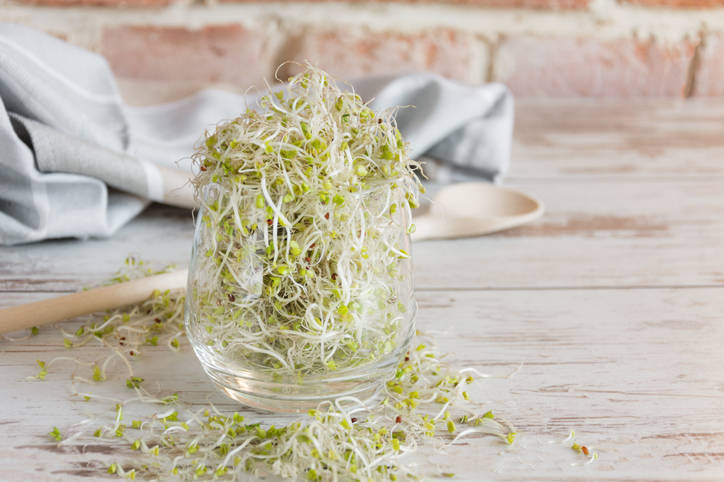
Growing food is often thought of as a laborious process which requires long hours and a lot of patience. This can serve as a deterrent to many who would like to have an instant return on their investment. I tend to fall into this later category. Fortunately, there are vegetables that you can start now and begin to enjoy in less than 14 to 60 days.
Microgreens: Microgreens are trendy right now in the world of market farming. One of the reasons for this is their quick turn-around from the time you plant them to the time you eat them. From sowing to harvesting typically takes just seven to 10 days.
Microgreens are the shoots of salad greens such as swiss chard, arugula, peas, basil, and even sunflowers. There are seed packets available that are specifically labeled as microgreens but almost any salad greens will work.
The easiest way to grow them is to fill a wide shallow container with potting soil. Spread the seeds thickly over the surface of the soil and spray with a light mist until the soil and seeds are evenly moist. Keep the soil and seeds moist over the next several days. The greens do not need light to sprout but it will help to keep them in a warm place like the top of your refrigerator.
In seven to 10 days the harvest should be ready, and you can simply cut the greens with a pair of scissors to enjoy on salad or sandwiches. For a daily harvest sow a new flat of microgreens every day.
Sprouts: Sprouts are similar to microgreens but grown in a different way. Types of seeds to use for sprouting include lentils, broccoli, mung beans, sunflower and chia. You will also need a clean sterilized jar, cheesecloth for the lid and a rubber band.
Begin with a few teaspoons of small seeds or a quarter cup for larger seeds. Pour them into your clean jar and then cover with 1 cup of water. Filtered water is best. Then cover the jar with the cheesecloth. After soaking for 12 hours, drain the seeds and rinse them off. Tilt them a bit to the side to drain over a bowl. Rinse again several times a day and continue draining at a tilt. You should see sprouts in 3-7 days. At that point they can be stored in the refrigerator for up to a week.
Leaf lettuce: I prefer to grow leaf lettuce compared to head lettuce. Not only is it quick but it is also less prone to pests. Once your lettuce has a few handfuls of leaves you can begin harvesting. You do not need to harvest all the leaves at once. You can pull off the leaves you want from the outside of the lettuce as you need them. You should be able to harvest your first leaves in less than 30 days. The season for leaf lettuce outdoors is coming to an end in our region but you can grow it indoors in containers.
Radishes: Some varieties of radish can be harvested in 21-30 days. Radishes that are harvested at this point have a mild flavor and their tops are also edible. As you are planting your warm weather vegetables like tomatoes and cucumber, try planting radishes between them. By the time the radishes are ready, the other vegetables will start to shade the space the radishes occupied. This gives you two harvests from the same amount of space.
Broccoli raab: You may have seen broccoli raab, also known as rapini, offered up at high-end restaurants for a hefty price. It only takes 40 to 60 days to grow your own and it is much easier to grow than standard broccoli. Its tender leaves and tops are both edible and taste divine in stir-fry.
Onion greens: If you cut up an onion to use for cooking, you can replant the bottom section that contains the roots. To do this simply push the cutting into the soil just barely covering the cutting. Keep the soil consistently moist. Within a few days the onion should begin sprouting. You can cut the onion greens as you need them, and the onion will continue to grow more. They make a flavorful addition to many dishes that you might cook.
Gardening can be simple and quick all while using what you may already have in your kitchen. This list is far from complete when it comes to growing food in a hurry. I encourage you to research more or reach out to me. I am happy to take your questions.
Terri Meehan is the Founder of Southern Nevada Gardening Association a regional group. She is a garden mentor and local farmer in Pahrump. Send questions or comments to her at sonvgarden@gmail.com